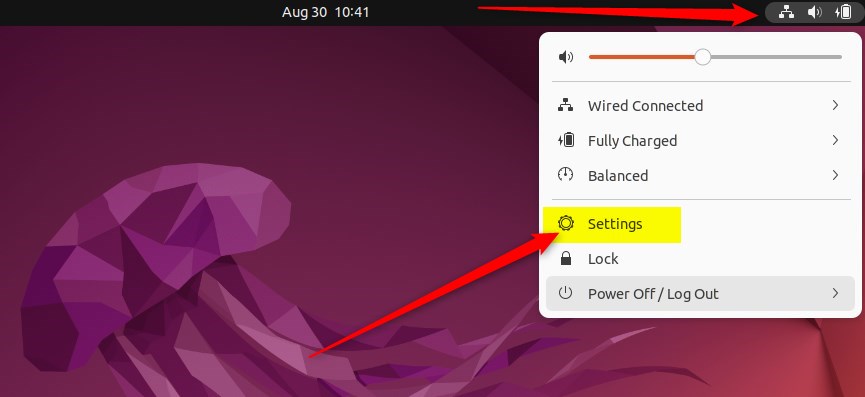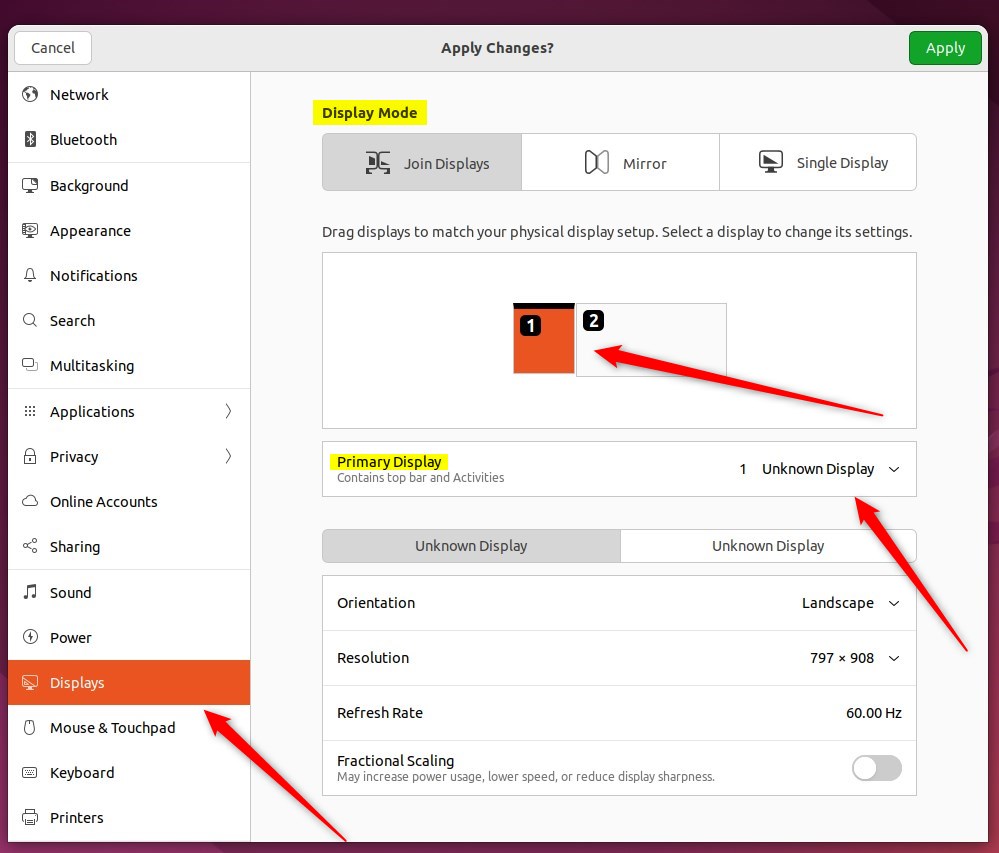This post describes adding a second or external monitor in Ubuntu Linux.
Ubuntu Linux is capable of working with multiple displays or monitors. So if you have additional monitors that you want to extend your work to, plug them into your Ubuntu Linux machine and start working.
Your computer will automatically try to detect the second monitor when attached. However, if Ubuntu Linux does not automatically recognize the second monitor or you want to adjust the settings, you can do it from the Ubuntu system settings app.
With two screens, these display modes are available:
- Join Displays: screen edges are joined so things can pass from one Display to another.
- Mirror: the same content is shown on two displays with the exact resolution and orientation.
- Single Display: only one Display is configured, effectively turning off the other.
Below is how to add a second monitor to Ubuntu Linux.
How to set up additional monitors in Ubuntu Linux
As described above, Ubuntu Linux can work with multiple displays or monitors. Below, we’ll show you how to add a second monitor to Ubuntu Linux.
Ubuntu Linux has a centralized location for the majority of its settings. From system configurations to creating new users and updating, all can be done from the System Settings panel.

Alternatively, click on the System menu at the top-right corner of the top bar on your desktop.
On the System menu, select Settings, as highlighted below.

Click on the Display tile to open the panel in the Settings app.

In the display arrangement diagram, drag your displays to the relative positions you want.
Select the display number for the display you would like to configure and make it primary or secondary. You can also drag the screens to the desired relative positions.

The primary Display is the one with the Dock, the top bar with the menu, and where the Activities overview is shown.
With two screens, these display modes are available:
- Join Displays: screen edges are joined so things can pass from one Display to another.
- Mirror: the same content is shown on two displays with the same resolution and orientation.
- Single Display: only one Display is configured, effectively turning off the other.
With both monitors shown, you can select each monitor’s orientation, resolution or scale, and refresh rate if they need adjustments.
After making all your changes, click Apply. The new settings will be applied for 20 seconds before reverting.
That should do it! You can now close the Settings app.
Conclusion:
- Adding a second monitor to Ubuntu Linux is a simple process that enhances productivity.
- Ubuntu’s system settings provide a user-friendly interface for configuring multiple displays, offering options for display arrangement and modes such as Join Displays, Mirror, and Single Display.
- Users can effortlessly set the primary and secondary displays, adjust the orientation, resolution, scale, and refresh rate, and apply the changes with just a click.
- Enjoy the expanded workspace and improved multitasking capabilities with the seamless integration of additional monitors in Ubuntu Linux.

Leave a Reply to susan mendoza Cancel reply